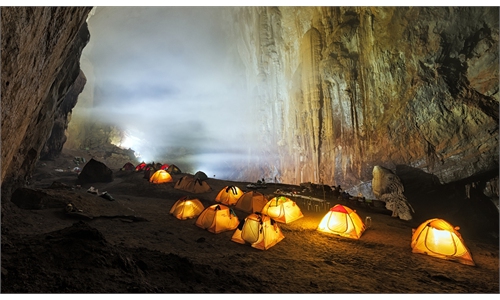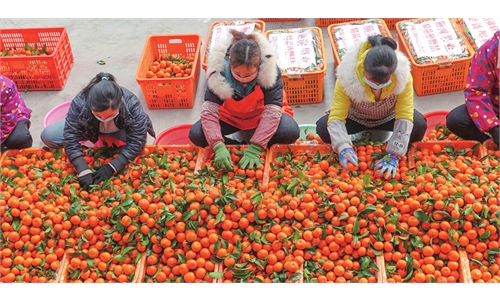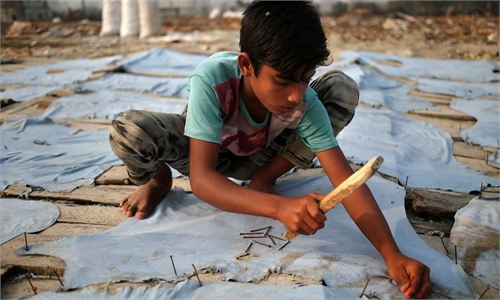New documentary by Japanese director reveals how China lifted 750 million people from poverty
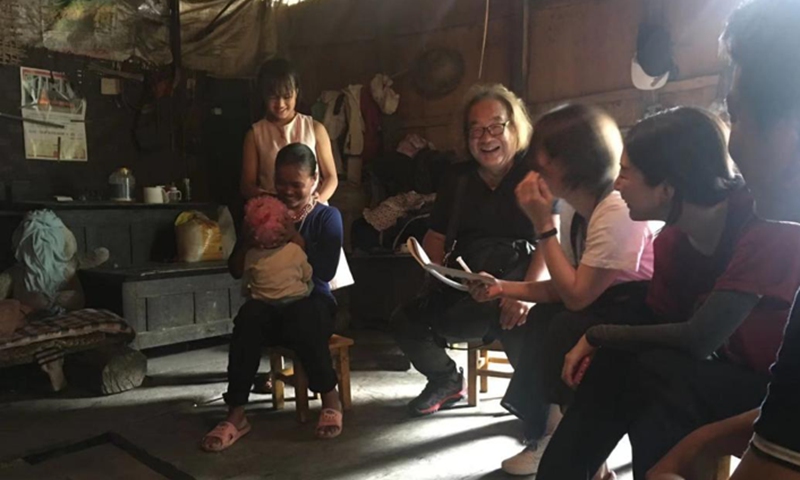
Japanese director Fujita (center) talks with Chinese villagers. Photo: Courtesy of China Review Studio
As the camera pans across the scene, several pairs of children's shoes can be seen scattered on a shelf of the small cave dwelling where Liu Xiangzong, his wife and their little grandson share a single bed.
Liu and his wife cannot hold back their tears in front of the camera as they recall the car accident that killed their only son not long ago.
The loss of the backbone of the family nearly destroys them, not only emotionally, but financially as well.
At a time when they were desperate and afraid they would not be able to go on, a government-sponsored program aimed at turning land unsuitable for growing crops into livestock herding farms helped them out of the mire.
This is one of the stories features in the third and final episode of the documentary TV series Poverty Reduction in China: A New Dawn, which was directed by Atsuo Fujita, a Japanese documentary director who has tackled social issues such as poverty in Moldova in Eastern Europe and Japanese immigrants in Brazil.
The idea to document China's poverty reduction efforts started with Fujita's "personal desire" to better know China, he told the Global Times.
In the documentary, which took two years to film, the director connects the real stories of poverty reduction to an ancient Chinese fairy tale in which an elderly man decides to take on the seemingly impossible task of removing the mountains that isolate his village from the outside world and with perseverance and dedication succeeds.
There are many reasons for poverty, all of these reasons are like giant mountains blocking people's way to living well-off lives.
Lifting people from poverty is like moving a mountain, it is something that takes steady and firm effort over a long period of time. After 42 years of sustained effort, China has lifted 750 million people out of poverty and achieved the poverty reduction goal set by the UN's 2030 Agenda for Sustainable Development 10 years ahead of the schedule.
The China Review Studio, which co-produced the documentary, told the Global Times that the trailer for the documentary aired on Euronews TV station at the end of 2020 and aroused European audiences' interest in the film.
The real life of Chinese farmers
Fujita did not use any lighting during filming as many farmers in rural areas live without lights and he felt the extra lighting equipment would spoil the reality he was trying to capture.
It was this reality that the director was pursing during filming - truth.
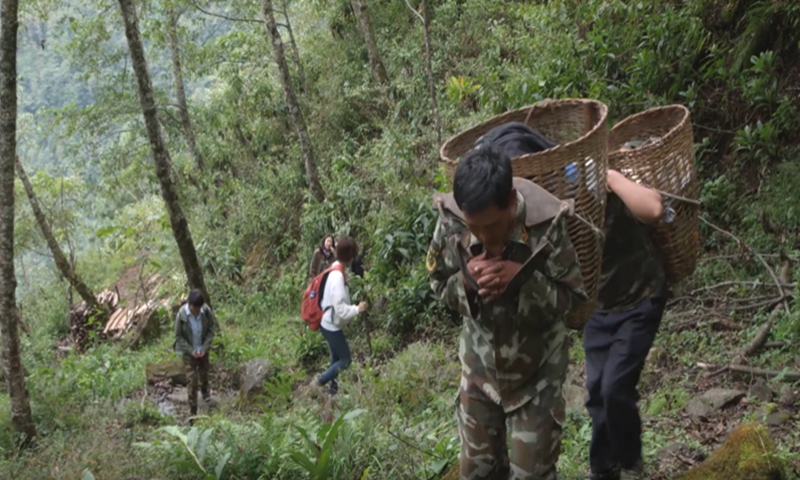
Photo: Courtesy of China Review Studio
Each episode of the documentary runs around 30 minutes. In the first episode, the production team arrives in Nujiang, the Lisu Autonomous Prefecture in Southwest China's Yunnan Province, after traveling along a long mountain road surrounded by ridges and peaks that has seen many landslides. Poor residents account for 56 percent of the prefecture's population.
Corn is only type of crop that will grow in the mountainous area and some farming families used to earn less than 3,000 yuan ($463) a year.
Local farmer Zhang Fangjin and his wife Mao Nanyu hosted the Japanese director at their mountain home. The dark room grew increasingly bleak as they filmed because of rain, so Fujita had to interview Zhang on the home's doorstep.
Then the scene changed as Zhang, Mao and their little baby took the film crew to their new home at the foot of the mountains - a bright and fully furnished space that stood in stark contrast to their old home.
The new home was built as part of a relocation program carried out by the local government to help poor villagers leave mountainous areas and live comfortably. Instead of working in the fields, many former farmers work at a clothing plant that was opened in the new village so they could earn higher salaries.
Before the Japanese director's lens, Zhang smiles as he plays with his little daughter on the balcony of their new home.
"These are neither statistical figures nor vague images, these people's lives are hot-blooded," Fujita wrote about his film journey in an email to the Global Times via email.
He added that he felt it meaningful to not only convey the actual living conditions of poor rural areas, but also China's anti-poverty efforts and the humanity of the people living there.
Chinese film and TV works about poverty reduction have kicked off one after another in 2021. Besides this documentary, other well-received TV dramas, such as A Land So Rich in Beauty, have also debuted on Mango TV and Hunan TV since January 10.
A Land So Rich in Beauty has an 8.3/10 on Chinese media review platform Douban.
The drama focuses on the poverty reduction efforts in ethnic minority settlements and does not avoid the real problems and challenges that these efforts have encountered.
Like in one episode, officials in a village have a hard time trying to persuade villagers to move to new homes as local customs do not support leaving one's birthplace behind. Fortunately, their patient efforts are rewarded after they work with the village leader to convince everyone of the advantages of moving.
The drama also shows the difficulties and happiness young officials encounter while carrying out poverty alleviation work, which can resonate with young viewers.
Global Times

